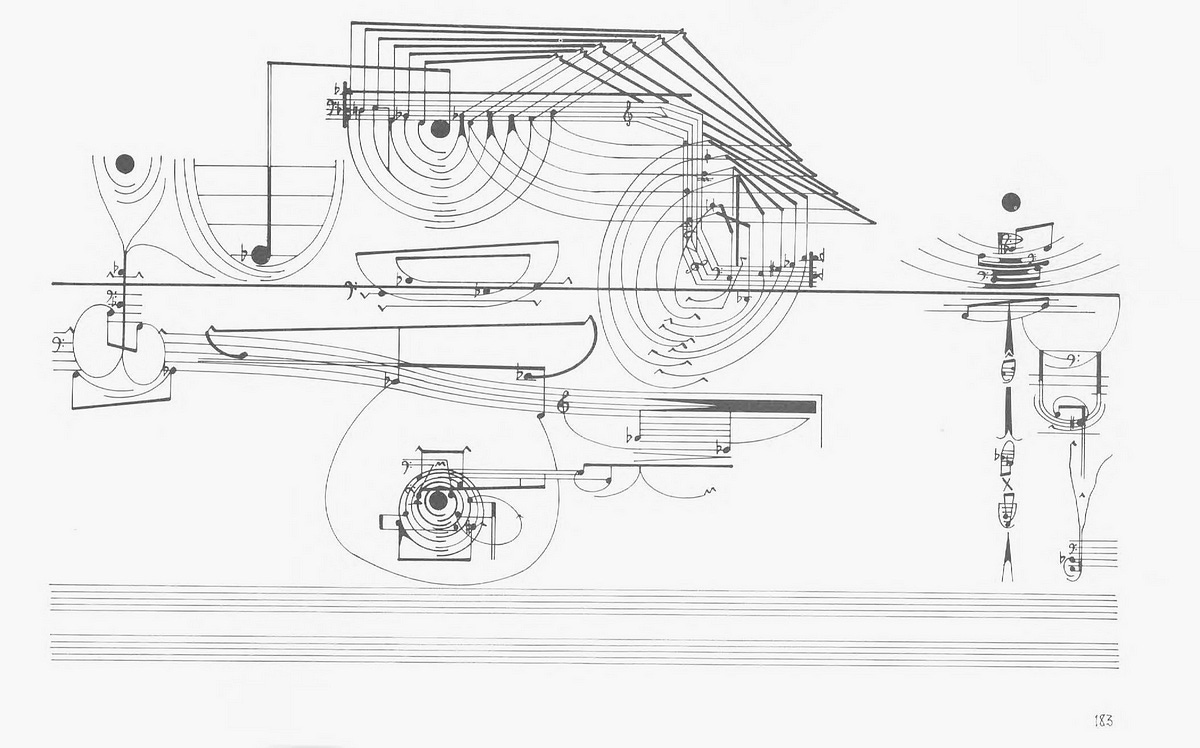Random processes shape generative music.

But generative music existed long before generative AI.
And very interesting music was composed around this idea.
It appeared as early as the 17th and 18th centuries.
Generative music is also called indeterminate music.
Or chance music.
Or stochastic.
Or aleatoric.
Types of Generative Music
Stochastic during composition (every performance is the same)
Stochastic during performance (every performance is different)
In Bryan Simms words: "Any part of a musical work is indeterminate if it is chosen by chance, or if its performance is not precisely specified. The former case is called 'indeterminacy of composition'; the latter is called 'indeterminacy of performance'".
This post focuses on music with stochastic performances.
And excludes music composed using rules or stochastic processes (where every performance is the same). In a previous post I already covered algorithmic music.
Wind Harp
It is a wind-driven string instrument.
Described as early as the 17th-century, it creates harmonic sounds stochastically.
Musikalisches Würfelspiel
It translates as “musical dice game”.
And is an 18th-century game in which music is assembled by chance.
Composers provided tables of pre-written bars, and dice rolls selected which bars to play at each point.
Henry Cowell — Mosaic Quartet (1935)
With this piece, performers can arrange fragments in various possible sequences.
This involves performer-driven chance around structure.
In this first example, the order is I → II → III → V (see title).
In this second example, the order is I (and that’s it, see title).
Morton Feldman — Projection I (1950)
He introduced a novel form of graphical notation.
Where tempo, timbre, and duration are indicated, but pitch and dynamics are left to the performer to decide.
It involves performer-driven chance around pitch and dynamics.
Earle Brown — Twenty-Five Pages (1953)
With 25 pages, it can be performed by up to 25 pianists.
The score allows performer(s) to arrange pages in whatever order they see fit.
Also, pages are notated symmetrically and without clefs, so that the top and bottom orientation is reversible.
The basic “mobile” elements of the piece —number of pianists, page sequence and inversion, clef disposition and time— admit of a considerable number of different presentations.
Karlheinz Stockhausen — Klavierstück XI (1956)
Its score consists of 19 short fragments scattered on a page.
And the pianist chooses the order during performance.
The rules are:
Play any fragment.
Follow instructions before choosing the next fragment.
Stop when a fragment has been played three times.
Thus, performer-driven chance generates a new form each time.
Witold Lutosławski — Venetian Games (1961)
The composer left the timing and rhythmic coordination to chance.
This is called aleatoric counterpoint by Lutosławski.
Terry Riley — In C (1964)
It is composed of 53 short sequences.
Ensemble members repeat each sequence as many times as desired before going on to the next, making every performance unique.
Cornelius Cardew — Treatise (1967)
It is a graphic score comprising 193 pages of lines, symbols, and various geometric or abstract shapes.
The score allows for absolute interpretive freedom.
Scores are beautiful.
Louis Andriessen — Worker’s Union (1975)
It is a melodically indeterminate piece.
The piece is very strict rhythmically, with only a guide to lower or raise pitches.
Sections may be repeated as many times as the conductor wishes, resulting in varying performance lengths.
The number of instruments is also left to chance, and every instrument plays different notes that follow the same rhythm.
Brian Eno — Music for Airports (1978)
He used tape loops of varying lengths to create ever-shifting, self-generating soundscapes.
It redefined music as an environmental, aleatoric experience.
Generative Modular
Modular synths generate music that evolves automatically.
Musicians patch modules together to generate sound and control signals.
Randomness and probability drive rhythms, melodies, and textures.
Disclaimer. This post does not include rule-based or stochastic compositions with fixed outcomes. To know more about algorithmic music, see this post. The views expressed are my own and do not reflect the opinions or positions of my employer.


Excellent overview! In light of so many tools and methods available to the contemporary music maker, it's good to sometimes revisit how we got here. It feels like everyday there's a new "generative" "ambient" "drone" or whatever plugin or tool that will "elevate" your ambient music making "journey" 😂.
This makes it all feel like creating generative compositions is about the tools, not the process... and this small series of essays provides a historical, musicological context that can help us all engage more deeply with the existing repertoire, as well as create more meaningful pieces. Thanks!